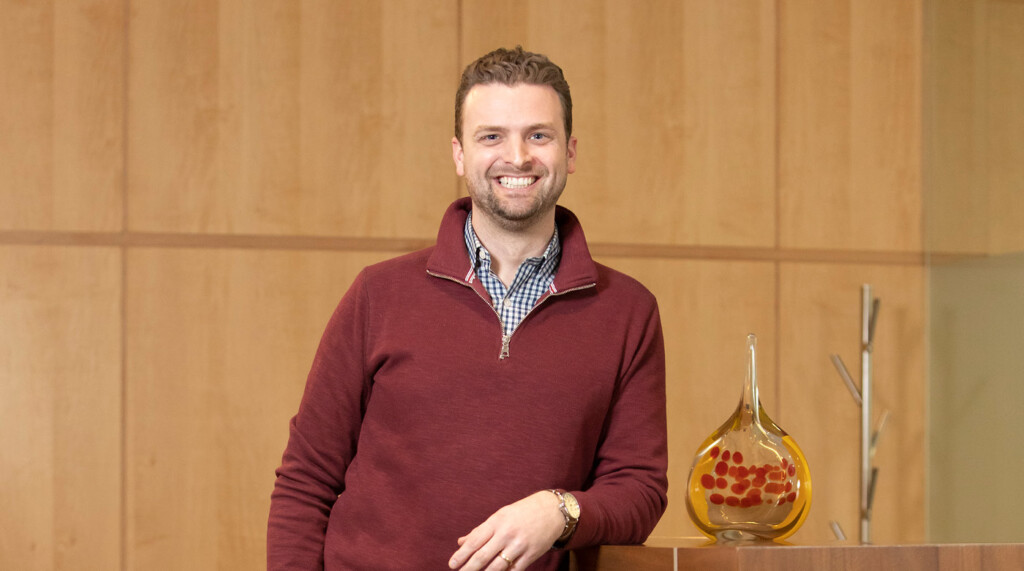Page 16 • (241 results in 0.07 seconds)
-
Heidi Schutz, PhDDepartment of BiologyCollaborative Student Wikis Heidi Schutz in Anatomy lab. (PLU Photo/John Froschauer) Wikispaces Product Website: www.wikispaces.com Cost: Free for educators and students.Heidi Schutz is an Assistant Professor in Biology and teaches Anatomy and Physiology and Comparative Vertebrate Anatomy. She is committed to implementing the core concepts of Vision and Change into biology education, in addition to implementing active learning as much as possible. She
-
, Teska said. The goal is for each project to produce a result, say a paper or project, and for the researchers to communicate their findings to local stakeholders. For his project, Behrens and two students will examine how temperature affects the diet and digestive physiology of herbivorous and omnivorous prickleback fishes. Todd and one student will look at glacier responses to climate change in Mount Rainier National Park and the impact on regional water resources. Finally, McKenna and two students
-
Behrens, the grant means he will continue his work into researching prickleback fishes indigenous to the Olympic peninsula. Behrens will study of the digestive physiology of tidepool fishes, and how temperature and diet affect the growth in the species. This will further the research into why some areas support fish that are herbivores, while other parts of the globe support fish that are basically carnivores and omnivores. It’s been recognized since the early 1960s that there are lots of herbivores
-
10237GSRS2871ST: Reproductive Justice 4M T W R F06/03-06/28 10285HISP1011Elementary Spanish GE 4ON06/03-06/28 10402HISP1021Elementary Spanish GEAsynchronous online class.4ON07/08-08/02 10090HIST1031Modern World Conflicts ES,GE 4ON06/03-06/28 10092HIST3891ST: Indust, Imper., & Indepen.Industrialization, Imperialism, and Independence in Global History4ON06/03-06/28 10096KINS3801Exercise Physiology 4T R0830-100006/03-06/28 10098KINS4781Motor Learning & Human Perform 4M T W R F0830-112006/03-06/21
-
restoration site just before the North Fork meets up with the main stem of Clover Creek Differences that you can SEE: Plants: seems to be more plant variety in riparian zones as you go from the top photo to the bottom photo. The top photo has mostly common grasses you would find in your lawn. The middle photo has some more wild grasses and tree saplings, while the bottom photo has a wide variety of grasses, bushes, and trees. Water depth: appears to increase from top to bottom. The water barely covers the
-

, her experience as an RA, and her plans to become a Certified Nurse Anesthesiologist Read Next Growing into her own: Sarah Davis ’23 discovers her passion for plant biology at PLU COMMENTS*Note: All comments are moderated If the comments don't appear for you, you might have ad blocker enabled or are currently browsing in a "private" window. LATEST POSTS Three students share how scholarships support them in their pursuit to make the world better than how they found it June 24, 2024 Kaden Bolton ’24
-
services, allowing the user to track their medicine usage across multiple devices. Using these highly documented software architectures, we were able to create an application that protects the user’s private data, while allowing them to access it through a simple user interface. 1:45pm Garden Guide: A Desktop Application to Assist Your Home Garden David Ries (BS), Brandon Enderby (BS) Garden Guide is your new and improved way to plan, plant, and manage your home garden. Developed as a Java based
-
Frequently Asked QuestionsWhat are the average GPA and GRE scores for admitted students for the ELMSN pathway?Average Cum. GPA: 3.4-3.6 Average Prerequisite GPA: 3.5-4.0 Please note: The GRE is now optional Average GREs of admitted students before GRE requirement change: Verbal: 155 (145-165) Quantitative: 153 (145-161) Analytical Writing: 4.5 (3.5-5.5) What are the grade and timeline requirements for the prerequisite courses?Minimum grade of 3.0/‘B’ in each course: Human Anatomy & Physiology I
-
Tolerance and Morphometrics as a Metric for Adult Stock in M. Magister Populations in the Pacific Northwest Earth & Environmental Science3rdBella Beha12BellarmineExamining the Effect of Experimental Steaming on Cernuella Virgata’s Geographic Distribution at the Port Environmental Engineering1stAvani Kumar9TimberlineThe Enhancement of an Oil Spill Cleaning Tool using Borosilicate Fibers, and Centrifugal Filter for a Hybrid Solution Plant Sciences1stKatie Su12BellarmineTesting the Rate of Growth of
-
teaching at PLU in 1950. Although she officially retired from teaching biology at PLU in 1975, she continued putting her energy into a herbarium for PLU students. Creso spent 30 years and nearly 20,000 hours gathering a wide range of plant species for the herbarium. Dr. Jens Knudsen, a former student of Creso’s and a future biology professor at PLU, asked Creso why she continued her work at PLU long after her retirement. Knudsen recalls, “When we asked her, ‘why?’ she replied, ‘Well there is nothing in
Do you have any feedback for us? If so, feel free to use our Feedback Form.


